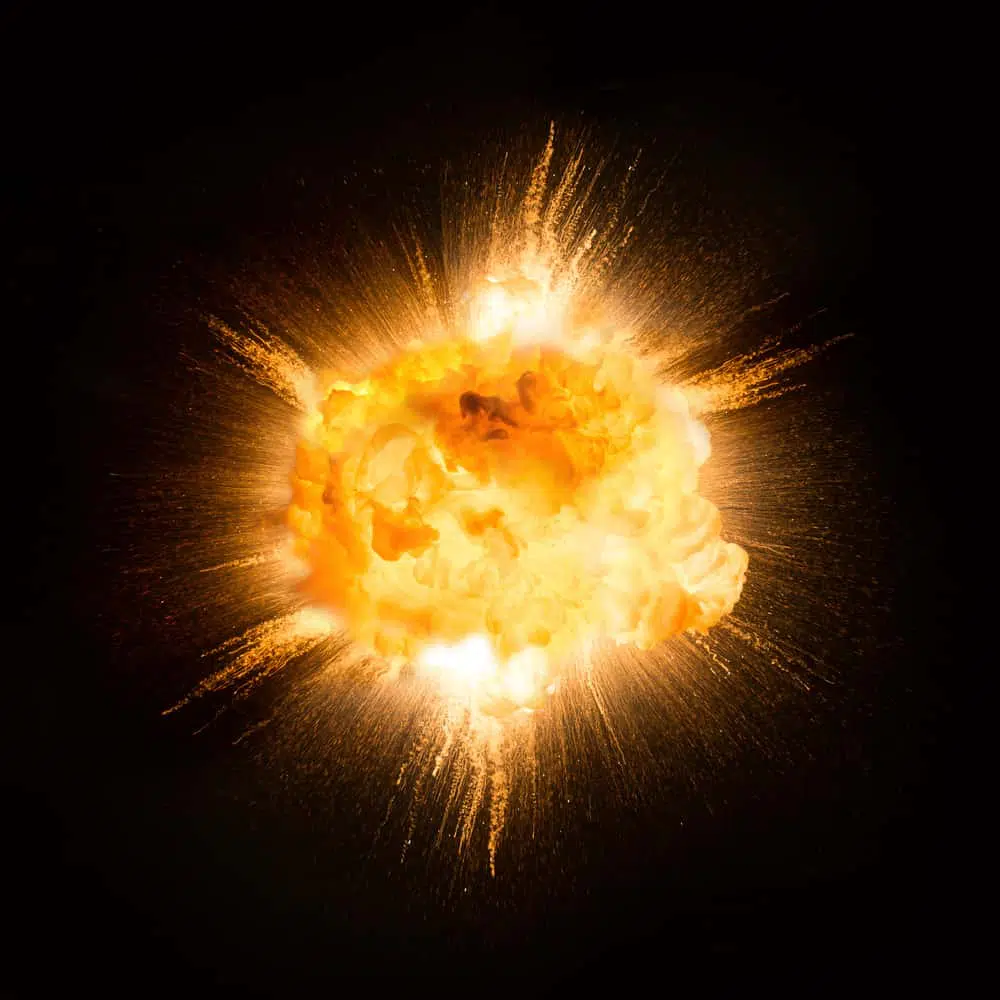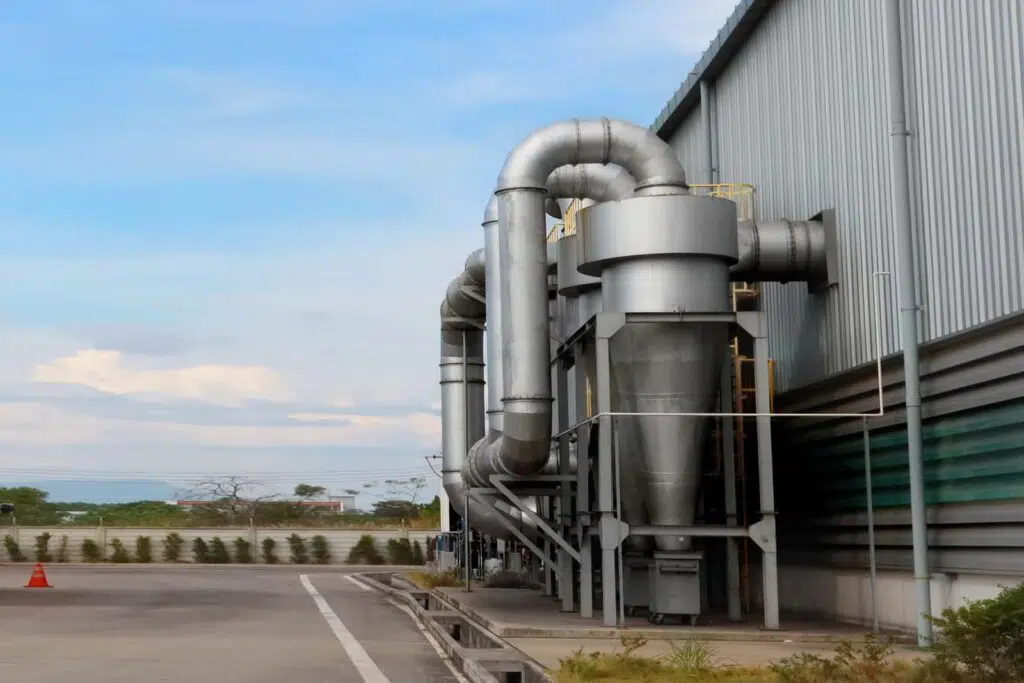Dust is one of the largest unintended byproducts of almost all workplaces. Woodworking, sugar manufacturing, paper manufacturing, and many other industrial processes can be the source of creating dust in the workplace. Dust can cause concerns ranging from food and product safety to the safety of the team members producing the product. What is often overlooked or unknown is that this dust can lead to deadly combustible dust explosions if not properly managed. What we will focus on in this article is the hazard of combustible dust, as well as potential solutions to mitigate this hazard in the workplace.

In order to mitigate combustible dust explosions, we have to understand what causes them. There are five main factors that, when combined, will cause a combustible dust explosion. These factors are oxygen, fuel, ignition, confinement, and dispersion; commonly referred to as the combustible dust pentagon. Without any one of these factors, the potential for a combustible dust incident is mitigated. Removing more than one factor can help ensure that a single event isn’t the cause of a combustible dust explosion.
When we look at the combustible dust explosion pentagon, we can also see what is commonly referred to as the fire triangle: oxygen, fuel, and ignition. These are the three factors that are needed to start a fire. If we take paper dust as fuel, we will then only need an ignition source to start the fire and oxygen to support it.
Imagine a pile of paper dust on the floor.
- If someone took a torch to that pile of paper, we would see a fire start as the oxygen and fuel burn. However, without dispersion or confinement, we would not see a combustible dust explosion.
- If we add dispersion to the mix, we would see what is known as a flash fire. If we took a handful of paper dust and sprinkled it over an open fire, it would create a “flash” effect, where each of those particles catches fire and spread to each other causing what appears to be a flash of fire. This is a similar effect to what happens when lighter fluid is used to keep a charcoal fire burning.
- If we add confinement to this mix, we get what is known as a combustible dust explosion. This is caused by the increasing pressure caused by gases expanding within a flash fire, building up to a point that exceeds the amount of pressure that can be taken by the confinement.
Removing a single factor may reduce our chances of a combustible dust explosion significantly but does not completely mitigate the hazard.
So, what causes dust to accumulate? The answer is not always as simple as pinpointing one or two items. Oftentimes, there are multiple processes that will create dust, and each one of these processes will have more than one control point. When we look at a converting plant, sometimes referred to as a box plant, we can see multiple processes inherent to normal operation that create and even spread these dusts. At the beginning of the whole process rolls of paper are unloaded from trucks and eventually brought either to a sheeter, or a roll fed printing press. In both of these processes that roll of paper will be cut down to specifications based on the customer and carton design. These rolls start off as a single piece of paper wound on a core that can be up to 4 miles long. By the end of the process, a single roll can turn into thousands, and even tens of thousands of cartons. This is all done by cutting the paper which inherently creates paper dust. When we look at offset printing presses, we can see more dust created through a material known as anti-set-off powder. Anti-set-off powder is sprayed in fine amounts between sheets on a printing press in order to prevent offset of the inks from one sheet to another. This anti-set-off powder is made out of a food grade starch material that is safe for the carton and those who handle it but is combustible in the right quantities and environment.

How do we control this dust? One way to adequately control dust exposure is through routine cleaning and maintenance, paired with routine audits and inspections. The majority of workplaces that have recognized a hazard for combustible dust typically install dust collection systems to help prevent the accumulation of dust in the workplace. These dust collection systems are designed to collect dust from various control points across the facility and isolate them into a storage confinement to be bagged and discarded as waste. These machines, as long as they are installed and maintained correctly, are effective at removing dust from the workplace. This effectively disrupts the combustible dust pentagon by removing fuel, dispersion, and confinement from the mix. As an added benefit, the removal of dust from the workplace creates an environment with cleaner air which is safer for team members to work in.
There are many resources available to manufactures to not only educate themselves on the hazards of combustible dust, but on how to effectively mitigate this hazard. The National Fire Protection Association, the Occupational Safety and Health Administration, and the Chemical Safety Board all provide resources to help understand combustible dust. More importantly, they help keep team members and the facilities they work in, safe from this hazard.





